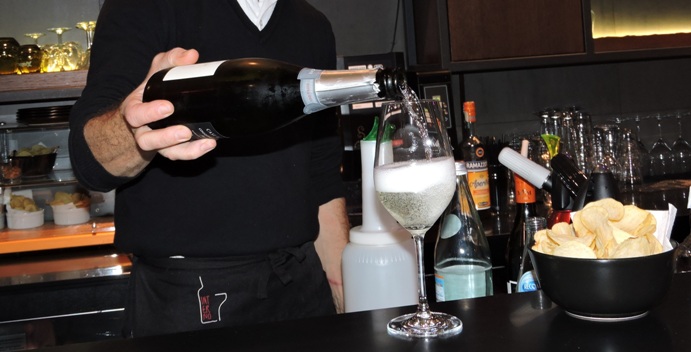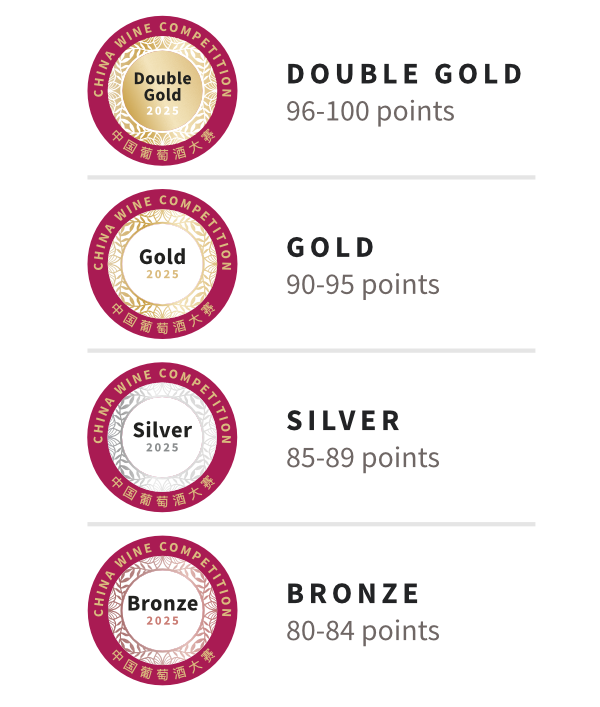October 22, 2025, Hong Kong

Personalized Sommelier Services, O2O Model etc. are some of the reasons for premiumization of China Wine Industry
China’s wine industry continues to go upscale at a rapid pace. The latest example is of 1919 Wine & Spirits wherein a personalized sommelier service enables customers to order a sommelier for home or restaurant with just a click of a button. This new personalized sommelier service is a sign of just how far the Chinese wine industry continues to evolve and change.
Personalized Sommelier Services

According to 1919 Wine & Spirits, it operates more than 1,500 wine and spirits shops across China. Introduction of the new personalized sommelier service will give the company an added advantage of wooing over online e-commerce buyers, many of them already searching out premium wines & spirits, many of them sourced globally and then imported into Mainland China. The sommelier will act as both a wine advisor and a delivery service guy. For example, if you are planning to dine out in the city of Chengdu, where the service was first introduced, you could order a sommelier to meet you at the restaurant, advise on food and wine pairings, and deliver any wine that has been recommended. While the service is available for both home and restaurant use, 1919 says that it expects the service mostly to be used at restaurants.
The move is a sign of the growing maturity of the Chinese wine consumer. Typically, banquet-style meals at restaurants have not emphasized food and wine pairings. And, in fact, many Chinese still prefer to consume baijiu and not wine at restaurant meals. But as more restaurants make use of the sommelier service, it is easy to see how this could change. 1919 says it expects the new service to help restaurants offer a wider range of wine and spirits.
The O2O model for the Chinese wine industry
In many ways, 1919 is at the forefront of what is known within China as the “O2O (“Online To Offline”) business model. Basically, customers shop for a product online, and then have it delivered to them in a real world, brick-and-mortar setting. Chinese restaurants have paired up with wine e-commerce sites to make it possible for customers to have wine delivered to the restaurant itself. This makes it possible for restaurants to offer a much wider selection of wines without worrying about inventory. And, on this same theme of O2O, 1919 also offers a 19-minute wine delivery service in cities, where it has its presence. This “instant” wine delivery service is even faster here than in Western markets, where “same day” wine delivery is available in cities like New York.
The one premium alcohol beverage brand that is at the forefront of the O2O trend is the baijiu brand Moutai. Customers can read about the spirit online, make an online selection, and then Moutai will find the best distributor for that product, based on the customer’s geographic location. Or, the customer would have the option to pick up the premium spirit bottle at any of 1,000 different offline stores, basically, whichever one is closest/convenient to the customer. In Western markets, this is essentially the same idea behind ordering a product online from a major retailer and then scheduling a time to pick up the order directly at a physical location.
Premiumization in the Chinese wine market
There are other signs of ongoing premiumization in the Chinese wine market. The Chinese wine region of Ningxia is perhaps the best example of a domestic wine-producing region that has started to carve out a reputation for itself on the global wine market. Not only does Ningxia now have Bordeaux-style chateaux that rival any found in France, but it also has a growing number of boutique wineries, many of them based in the Helan Mountains area, that have won awards on the global stage. Most notably, red Bordeaux-style wines from Ningxia have outscored wines from Bordeaux in international wine competitions. At the same time, high-end retail wine shops around the world have started to stock Ningxia wines, and some Michelin-starred restaurants now include them on their wine lists.
Another way to see the premiumization of the Chinese wine market is to track the most popular wine brands in the nation. In one recent brand awareness survey carried out by Wine Intelligence, half of the Top 32 wine brands in the nation were French. The clear leader was “Bordeaux,” followed by high-end wine producing regions in France such as Burgundy, Champagne, Cotes-du-Rhone and the Loire Valley.
As Chinese wine consumer palates have grown increasingly sophisticated, so has their taste in wine. At one time, the only wines that Chinese consumers trusted were red Bordeaux wines from premium, iconic producers like Lafite Rothschild. Now, however, a handful of wine regions outside of France are starting to gain consumer trust and acclaim. Of the Top 32 wine brands, for example, four were from Italy (Tuscany, Chianti, Barolo, Sicily); three were from Australia (Barossa Valley, Margaret River, Yarra Valley) and two were from the United States (Napa, Sonoma). Wine regions like Mendoza in Argentina and Marlborough in New Zealand also made the list.
Wine as a mark of style and sophistication

Among older Chinese wine consumers, high-end red wines from Bordeaux and Burgundy continue to be favourite gifts for presents. But what is most interesting is how younger Chinese consumers now view wine as a sign of social status. Being able to order the right wine for the right occasion is seen as a sign of sophistication. This has put a real premium for Key Opinion Leaders on social media to help young millennials figure out the right wines to drink. Online wine communities and wine clubs, such as Lady Penguin, have emerged, with a focus on regular drinking of premium wines from around the world.
Going forward, it’s easy to see how China’s wine market will continue to go upscale. The same premiumization trends that have characterized Western wine markets for the past few years is now making its mark in China – and that is opening up many new opportunities. Whether it is personalized sommelier services or innovative O2O business models, that connect online consumers with wine in the physical world, there is a clear optimism about where the Chinese wine market is headed.
The 2025 China Competitions results are now live. View 2025 winners.
Key Dates
Winners Announcement: November 6, 2025


